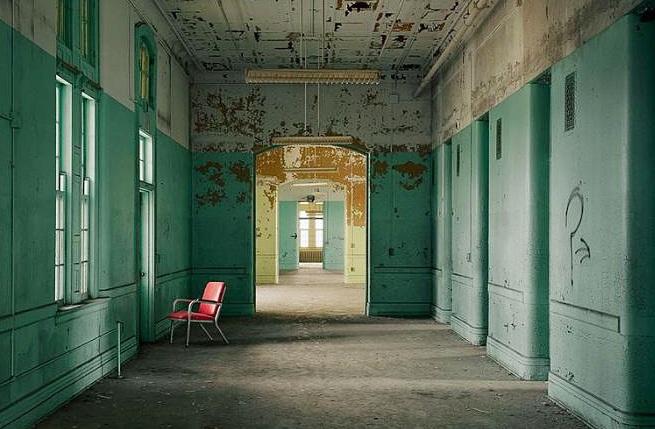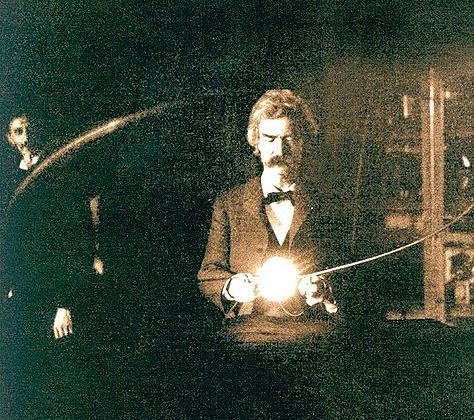Saturday, 12 December 2009
Saturday, 21 November 2009
ASYLUM: Inside the Closed World of State Mental Hospitals
 We tend to think of mental hospitals as “snake pits”—places of nightmarish squalor and abuse—and this is how they have been portrayed in books and film. Few Americans, however, realize these institutions were once monuments of civic pride, built with noble intentions by leading architects and physicians, who envisioned the asylums as places of refuge, therapy, and healing. For more than half the nation’s history, vast mental hospitals—some of the largest structures ever built in America—were a prominent feature of the American landscape. From the mid-nineteenth century to the early twentieth, over 250 institutions for the insane were built throughout the United States. But in the second half of the twentieth century, after the introduction of psychotropic drugs and policy shifts toward community-based care, patient populations declined dramatically, leaving many of these massive buildings neglected and abandoned. Asylum: Inside the Closed World of State Mental Hospitals is a collection of large-format photographs taken by photographer Chris Payne, who was granted unprecedented access to seventy institutions in thirty states between 2002 and 2008. Through his lens we see palatial exteriors designed by famous architects and crumbling interiors never intended to be seen again. He shows how the hospitals functioned as self-contained communities, where almost everything of necessity was produced on site: food, water, power, and even clothing and furniture. Since many of these places no longer exist, his photographs serve as their final, “official” record.Accompanying the contemporary views are historic plans, drawings, and photographs, as well as an essay by world-renowned author and neurologist Dr. Oliver Sacks, who describes his own experience working at a state mental hospital. Sacks pays tribute to Payne's photographs and to the lives once lived in these places, “where one could be both mad and safe”.
We tend to think of mental hospitals as “snake pits”—places of nightmarish squalor and abuse—and this is how they have been portrayed in books and film. Few Americans, however, realize these institutions were once monuments of civic pride, built with noble intentions by leading architects and physicians, who envisioned the asylums as places of refuge, therapy, and healing. For more than half the nation’s history, vast mental hospitals—some of the largest structures ever built in America—were a prominent feature of the American landscape. From the mid-nineteenth century to the early twentieth, over 250 institutions for the insane were built throughout the United States. But in the second half of the twentieth century, after the introduction of psychotropic drugs and policy shifts toward community-based care, patient populations declined dramatically, leaving many of these massive buildings neglected and abandoned. Asylum: Inside the Closed World of State Mental Hospitals is a collection of large-format photographs taken by photographer Chris Payne, who was granted unprecedented access to seventy institutions in thirty states between 2002 and 2008. Through his lens we see palatial exteriors designed by famous architects and crumbling interiors never intended to be seen again. He shows how the hospitals functioned as self-contained communities, where almost everything of necessity was produced on site: food, water, power, and even clothing and furniture. Since many of these places no longer exist, his photographs serve as their final, “official” record.Accompanying the contemporary views are historic plans, drawings, and photographs, as well as an essay by world-renowned author and neurologist Dr. Oliver Sacks, who describes his own experience working at a state mental hospital. Sacks pays tribute to Payne's photographs and to the lives once lived in these places, “where one could be both mad and safe”. Wednesday, 4 November 2009
Mark Twain, illuminated
 From a 1895 article called Tesla's Osillator and Other Inventions, a photo of Mark Twain with one of Tesla's marvelous contraptions.
From a 1895 article called Tesla's Osillator and Other Inventions, a photo of Mark Twain with one of Tesla's marvelous contraptions.Tuesday, 15 September 2009
The shape of the book
 It is impossible to establish exactly when the book was invented or first began to circulate. Indeed, none of the forms exhibited here can be considered the embryo of what we have come to refer to as books. Nevertheless, if we narrow our scope to the Laurentian manuscript collection—in itself quite extensive—it would appear that the potsherd on which, probably under dictation, a pupil from the 2nd century BC wrote the ancient verses of one of Sappho’s odes marks the most significant threshold of its history; the fragment represents the longest extant portion of the poem, which may have been dedicated to Aphrodite. The ostracon is a rare medium due solely to the fact that, since it is a fragile material that was not used for anything meant to endure, large quantities have not been handed down to us. The book form we chose as our endpoint—and thus closer to our own era—is a 19th-century Japanese erotic-grotesque scroll expressing a genre that enjoyed widespread and lasting circulation because of its caricatural and entertaining contents. Due to its distant provenance, however, it is a rarity in Italian libraries. Between these two intentionally striking extremes, we have created an itinerary that requires some explanation.
It is impossible to establish exactly when the book was invented or first began to circulate. Indeed, none of the forms exhibited here can be considered the embryo of what we have come to refer to as books. Nevertheless, if we narrow our scope to the Laurentian manuscript collection—in itself quite extensive—it would appear that the potsherd on which, probably under dictation, a pupil from the 2nd century BC wrote the ancient verses of one of Sappho’s odes marks the most significant threshold of its history; the fragment represents the longest extant portion of the poem, which may have been dedicated to Aphrodite. The ostracon is a rare medium due solely to the fact that, since it is a fragile material that was not used for anything meant to endure, large quantities have not been handed down to us. The book form we chose as our endpoint—and thus closer to our own era—is a 19th-century Japanese erotic-grotesque scroll expressing a genre that enjoyed widespread and lasting circulation because of its caricatural and entertaining contents. Due to its distant provenance, however, it is a rarity in Italian libraries. Between these two intentionally striking extremes, we have created an itinerary that requires some explanation. Thursday, 2 April 2009
Flat Lizard colourful displays & fly catching
Watch the beautiful displays of the Flat Lizard and see the amazing acrobatics performed in the quest for a black fly dinner. Learn more about the fascinating world of the colourful Flat Lizard in this brilliant wildlife video from Sir David Attenborough's natural history masterpiece, Life in Cold Blood (see video).
Saturday, 7 March 2009
The Iceman Photo Scan
 The Iceman Photo Scan is an innovative project which records the complete photographic documentation of the body of the Iceman mummy. Thanks to 12 differing angle-shots it is possible to see the whole body of the mummy. The intuitive zoom function enables a high-resolution navigation, from a total body image down to millimetric detail. The image at any enlargement guarantees both a perfect view and accurate colour reproduction. More
The Iceman Photo Scan is an innovative project which records the complete photographic documentation of the body of the Iceman mummy. Thanks to 12 differing angle-shots it is possible to see the whole body of the mummy. The intuitive zoom function enables a high-resolution navigation, from a total body image down to millimetric detail. The image at any enlargement guarantees both a perfect view and accurate colour reproduction. More
Saturday, 24 January 2009
Darwin Big Idea
 Darwin is the biggest ever exhibition about Charles Darwin. It celebrates Darwin's ideas and their impact for his 200th birthday in 2009. Discover the man and the revolutionary theory that changed our understanding of the world. See incredible, revealing and rare exhibits, some on display for the first time (more at The Natural History Museum, London.
Darwin is the biggest ever exhibition about Charles Darwin. It celebrates Darwin's ideas and their impact for his 200th birthday in 2009. Discover the man and the revolutionary theory that changed our understanding of the world. See incredible, revealing and rare exhibits, some on display for the first time (more at The Natural History Museum, London.
Subscribe to:
Posts (Atom)
Contents of the day
Article of the Day
Article of the Day
provided by The Free Dictionary
This Day in History
This Day in History
provided by The Free Dictionary
Today's Birthday
Today's Birthday
provided by The Free Dictionary
In the News
In the News
provided by The Free Dictionary
Quote of the Day
|
To have a right to do a thing is not at all the same as to be right in doing it.
Gilbert Chesterton (1874-1936) |
Quote of the Day
provided by The Free Library